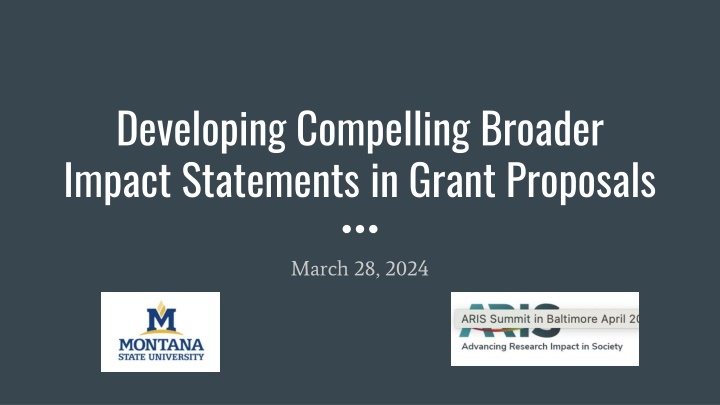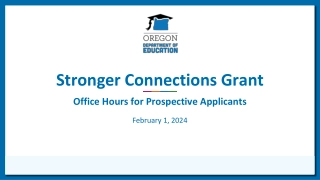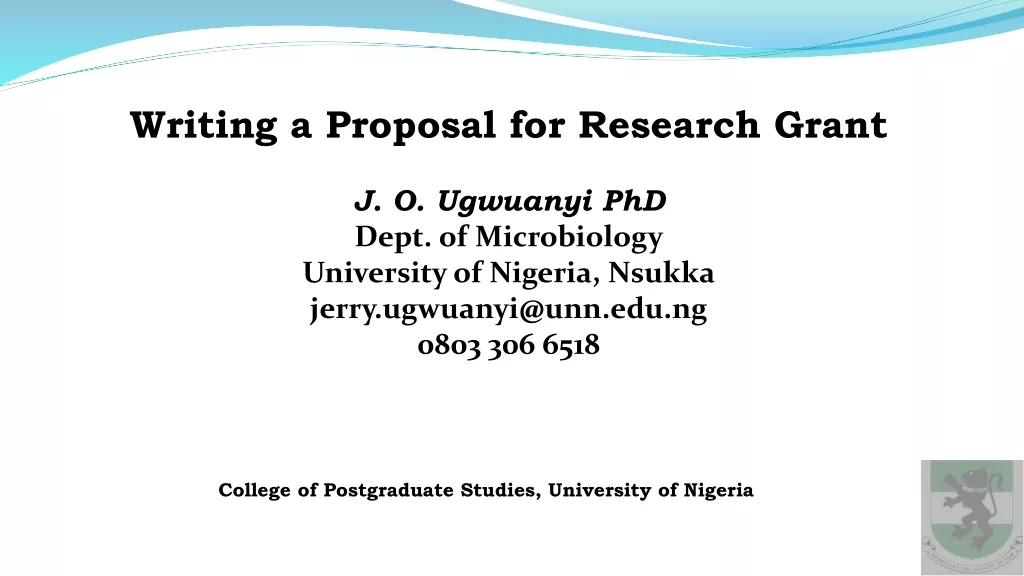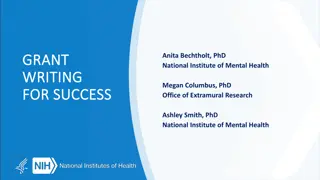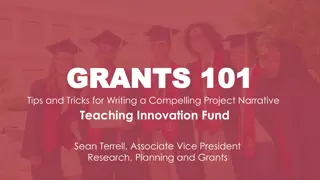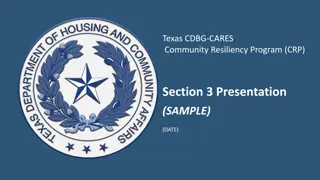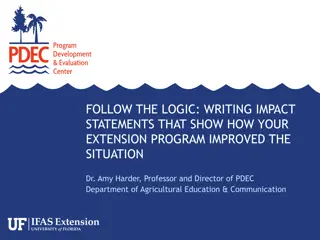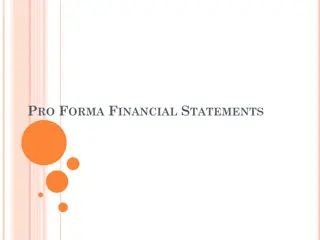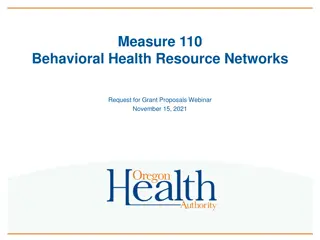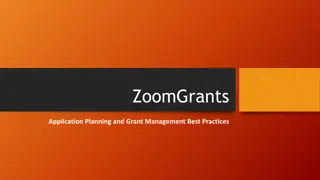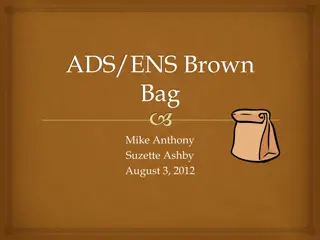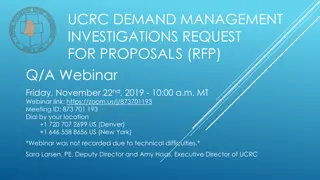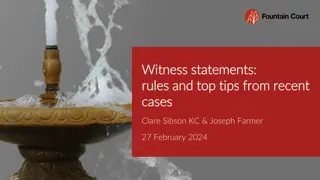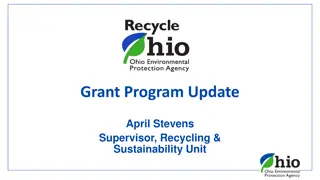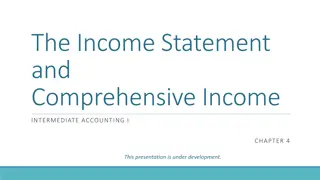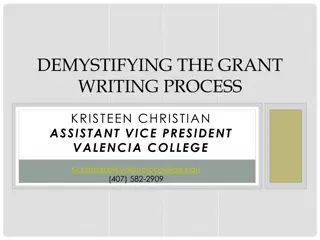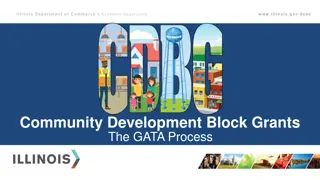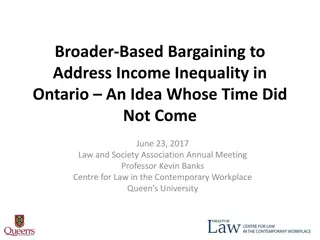Developing Compelling Broader Impact Statements in Grant Proposals
Understanding the significance of broader impacts in grant proposals, evaluating BI plans, and learning how to develop compelling statements to enhance proposal competitiveness. Explore the history, definition, and importance of broader impacts in NSF reviews for successful grant applications.
Download Presentation

Please find below an Image/Link to download the presentation.
The content on the website is provided AS IS for your information and personal use only. It may not be sold, licensed, or shared on other websites without obtaining consent from the author.If you encounter any issues during the download, it is possible that the publisher has removed the file from their server.
You are allowed to download the files provided on this website for personal or commercial use, subject to the condition that they are used lawfully. All files are the property of their respective owners.
The content on the website is provided AS IS for your information and personal use only. It may not be sold, licensed, or shared on other websites without obtaining consent from the author.
E N D
Presentation Transcript
Developing Compelling Broader Impact Statements in Grant Proposals March 28, 2024
Today we will Overview of broader impacts (BI) and why they matter Evaluate case study BI plan using the BI Toolkit Rubric BI Toolkit Developing and sharing BI plans using the BI Toolkit Wizard
Some NSF review context On average, NSF receives ~50,000 proposals per year ~26% funding rate Proposals evaluated using two Intellectual merit Intellectual merit the potential to advance knowledge, and Broader impacts Broader impacts the potential to benefit society and contribute to the achievement of specific, desired societal outcomes two review criteria:
What are broader impacts? Definition: Broader impacts the potential to benefit society and contribute to the achievement of specific, desired societal outcomes NSF is open to a wide variety of approaches to Broader Impacts; not prescriptive and innovation encouraged! These broader impacts may be accomplished three ways: The research itself Activities that are directly related to specific research projects, or Activities that are supported by, but are complementary to, the project Requires both practices practices (what you do) and communication what you do in your proposal and beyond) communication (how you talk about
A brief history of broader impacts 1950 1950: NSF established as an independent federal agency by Congress to: 1) Promote the progress of science; and 2) Advance the national health, prosperity and welfare (look familiar?) 1960s 1960s: Broader impacts in some form were considered 1997 1997: Became a separate and distinct criterion for proposal review (IM & BI) 2007 2007: emphasis on transformative research
A brief history of broader impacts (continued) 2011 2011: National Science Board issued report on NSF s review criteria and set forth three merit review principles three merit review principles (ROI for taxpayer $) Advance, if not transform, the frontiers of knowledge Contribute more broadly to achieving societal goals Appropriate metrics for assessment and evaluation of project success 2017 2017: NSF established National Association for Broader Impacts (NABI) 2018 2018: Center for Advancing Research Impact in Society (ARIS) founded at U Missouri 2024: 2024: NSF decides it will change name of Broader Impacts to Societal Benefit
Why care about broader impacts? Clarifying for yourself why you do your research - core values/motivations Identifying and communicating the benefit to society of your research Creative possibilities for applying research for public benefit Improving society Grant $$ Visibility/publicity of research Potential to build and sustain partnerships/engagement outside academia Greater awareness of networks to tap for future projects Applicability to other funding sources beyond NSF
Review criteria: how does NSF evaluate broader impacts? Your proposal to NSF must clearly state how your activities will contribute to one or more desired societal outcomes. Grant reviewers will evaluate your Broader Impacts statement on these five criteria: 1) What is the potential for the proposed activity to benefit society or advance desired societal outcomes? 2) To what extent do the proposed activities suggest and explore creative, original or potentially transformative concepts? 3) Is the plan for carrying out the proposed activities well-reasoned, well-organized and based on sound rationale? Does the plan incorporate a mechanism to assess success? 4) How well qualified is the individual, team or institution to conduct the proposed activities? 5) Are there adequate resources available to the principal investigator (either at the home institution or through collaborations) to carry out the proposed activities?
Remember Your project's broader impact activities don't need to be a separate add-on to your research. Your project can have broader impacts through: Your research activities Activities directly related to your research Activities that are supported by, but complementary to, your research activities
ARIS Broader Impacts Toolkit A tool to devise a thorough Broader Impacts plan: https://aris.marine.rutgers.edu/ What are Broader Impacts: https://youtu.be/Lvta88_ZO2k
BI Rubric ARIS BI Rubric Case Study: https://aris.marine.rutgers.edu/tutorial.php
BI Wizard - Planning Guide https://aris.marine.rutgers.edu/wizard/intro.php
BI Wizard - Try the Project Planning Tool with your own project https://aris.marine.rutgers.edu/wizard/step0_intro.php
To summarize: Things to consider when crafting your BI statements 1) Does your BI statement address a demonstrated need? 2) Are the needs of those participating in your project described? 3) Are the benefits to participation described? 4) Is the length of the engagement with the participants described and adequate? 5) Is there a mechanism described for reaching them?
Workshop and discuss your own statements in groups on the following prompts 1) Who will I work with? 2) How and where will I work with them? 3) What effective practices support my proposed approach? 4) How will I know if I have been successful/effective? 5) And how much will all this cost?
Some BI support at MSU and other resources Nika Stoop, Assistant Director, Center for Faculty Excellence: nikastoop@montana.edu Suzi Taylor, Director, Math and Science Resource Center: taylor@montana.edu Nicole Motzer, Director, Office of Research Development: nicole.motzer@montana.edu Daniel Grant, Associate Director of Research Development for Extension & Engagement: daniel.grant1@montana.edu ARIS Broader Impacts Toolkit: https://aris.marine.rutgers.edu/
